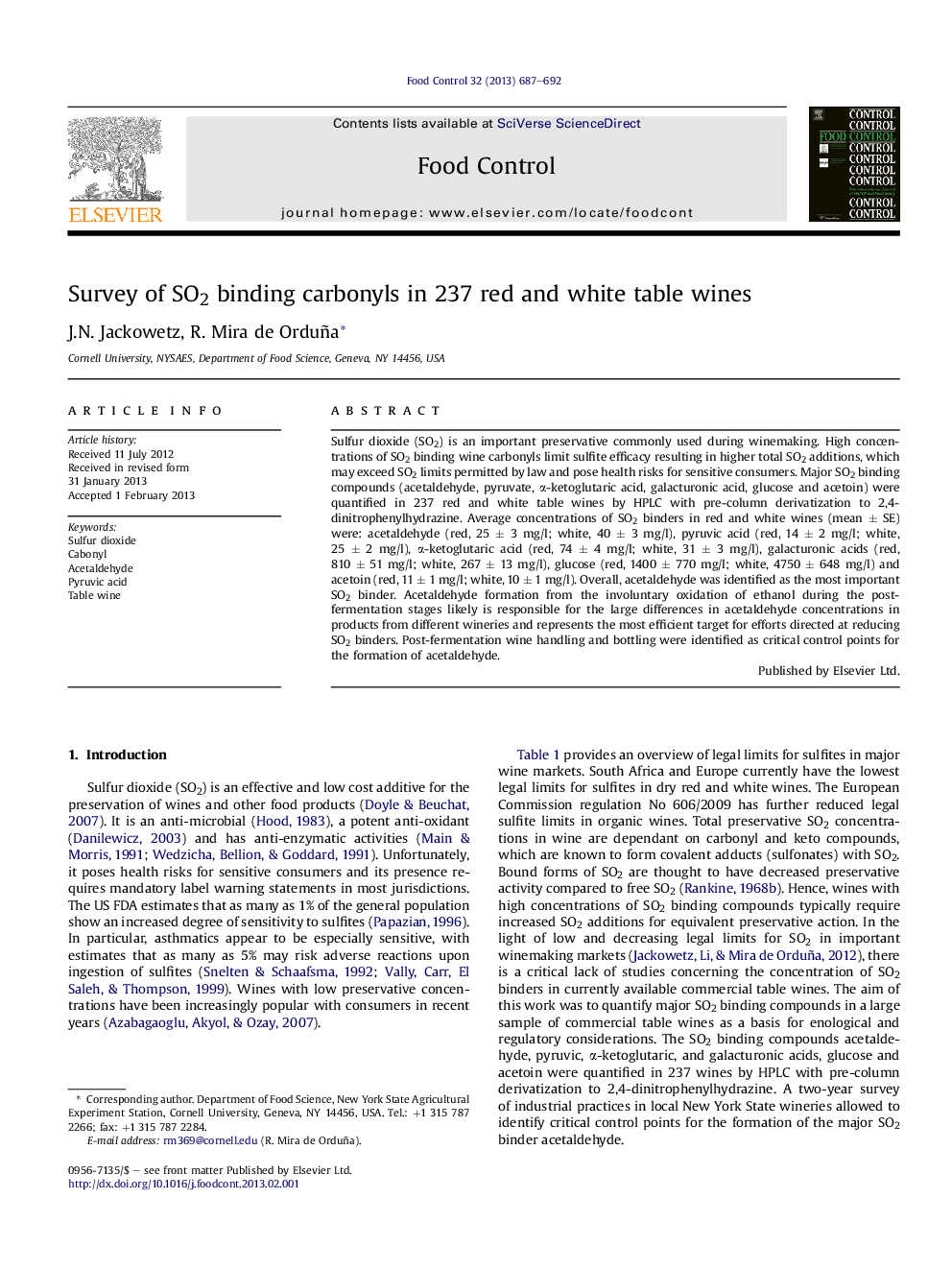| کد مقاله | کد نشریه | سال انتشار | مقاله انگلیسی | نسخه تمام متن |
|---|---|---|---|---|
| 4559423 | 1330439 | 2013 | 6 صفحه PDF | دانلود رایگان |

Sulfur dioxide (SO2) is an important preservative commonly used during winemaking. High concentrations of SO2 binding wine carbonyls limit sulfite efficacy resulting in higher total SO2 additions, which may exceed SO2 limits permitted by law and pose health risks for sensitive consumers. Major SO2 binding compounds (acetaldehyde, pyruvate, α-ketoglutaric acid, galacturonic acid, glucose and acetoin) were quantified in 237 red and white table wines by HPLC with pre-column derivatization to 2,4-dinitrophenylhydrazine. Average concentrations of SO2 binders in red and white wines (mean ± SE) were: acetaldehyde (red, 25 ± 3 mg/l; white, 40 ± 3 mg/l), pyruvic acid (red, 14 ± 2 mg/l; white, 25 ± 2 mg/l), α-ketoglutaric acid (red, 74 ± 4 mg/l; white, 31 ± 3 mg/l), galacturonic acids (red, 810 ± 51 mg/l; white, 267 ± 13 mg/l), glucose (red, 1400 ± 770 mg/l; white, 4750 ± 648 mg/l) and acetoin (red, 11 ± 1 mg/l; white, 10 ± 1 mg/l). Overall, acetaldehyde was identified as the most important SO2 binder. Acetaldehyde formation from the involuntary oxidation of ethanol during the post-fermentation stages likely is responsible for the large differences in acetaldehyde concentrations in products from different wineries and represents the most efficient target for efforts directed at reducing SO2 binders. Post-fermentation wine handling and bottling were identified as critical control points for the formation of acetaldehyde.
► An ultra high pressure HPLC method was used to quantify SO2 binding carbonyls in over 200 red and white cool climate table wines.
► Acetaldehyde, pyruvic acid and α-ketoglutaric acid caused 72, 17 and 8% of the bound SO2 in white wines, respectively.
► Acetaldehyde, pyruvic acid and α-ketoglutaric acid caused 55, 12 and 23% of the bound SO2 in red, respectively.
► The work provides frequency and winery-specific analyses to support regulatory and enological decisions.
► Critical control points for the formation of acetaldehyde in post-fermentative handling were identified.
Journal: Food Control - Volume 32, Issue 2, August 2013, Pages 687–692